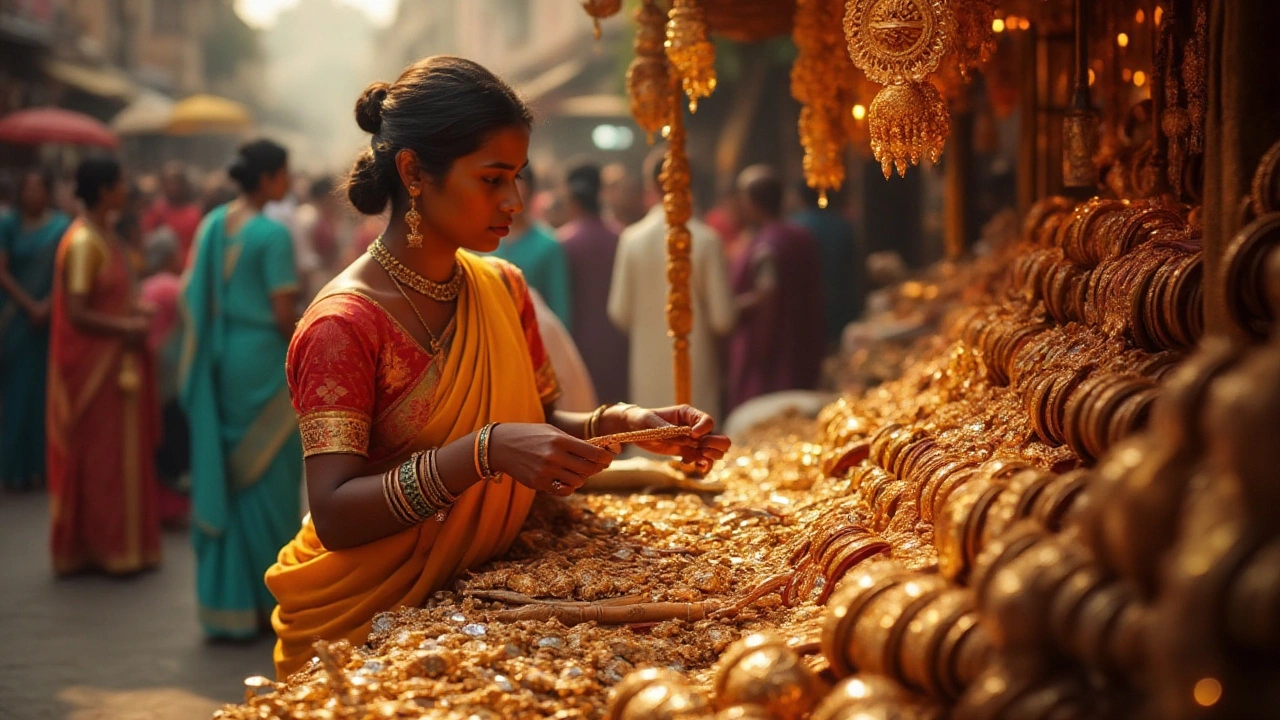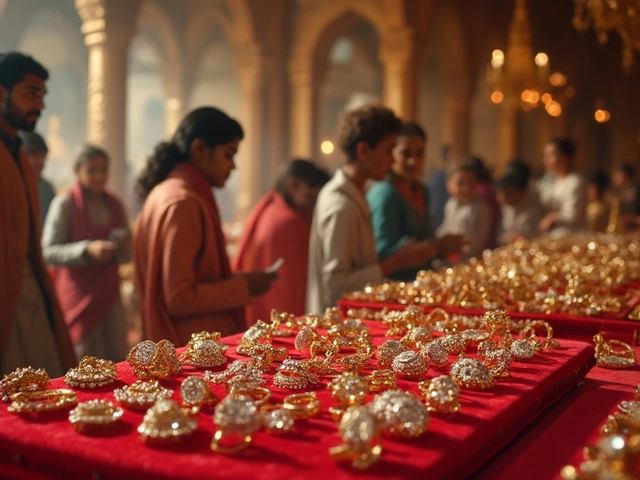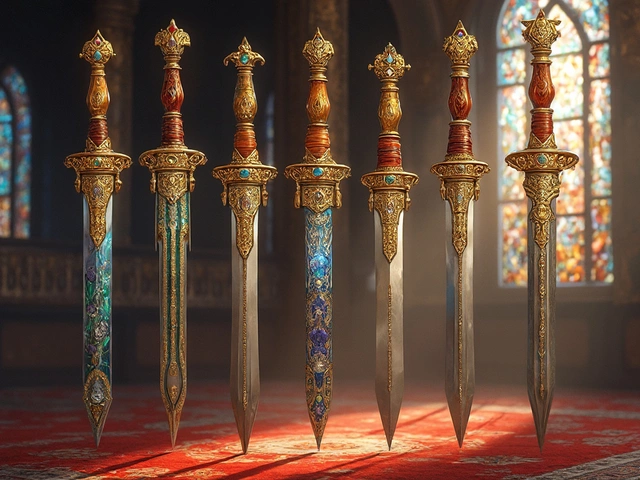Many people wander into the mesmerizing world of jewelry with dreams of discovering rare gems, but often find themselves tangled in terms like vintage and antique. These words may seem interchangeable; yet, they're rooted in history, age, and unique stories.
When you step into this dazzling domain, knowing the difference can significantly enhance your appreciation and even impact the investment value of your pieces. It's akin to stepping into the past—the allure of vintage jewelry can be defined in decades, while antiques must boast at least a century of history.
Eager to dive deeper? Whether you're a budding collector or someone looking to understand their grandmother's prized brooch, understanding these nuances will be your guiding light. Let's take a journey through time to explore and celebrate these cherished pieces of history.
- Defining Vintage and Antique Jewelry
- Characteristics of Vintage Jewelry
- Features of Antique Jewelry
- Valuing Jewelry Based on Age
- Navigating the Jewelry Market
Defining Vintage and Antique Jewelry
Understanding the distinction between vintage jewelry and antique jewelry is essential for enthusiasts and collectors alike, as these terms describe not just age but the essence and historical context of each piece. Let's start with antiques. By definition, antique jewelry is any piece that is at least 100 years old. This means that as of 2025, any jewelry crafted before 1925 falls into this category. Antiques bring with them an aura of charm and mystery, each piece a remnant of times gone by, often reflecting the artistic sensibilities and socio-economic narrative of a bygone era.
On the other hand, vintage jewelry encompasses more recent decades. Typically, items that are 20 to 100 years old are considered vintage. Thus, jewelry from the 1920s through the early 2000s can be classified as vintage today. According to experts, vintage jewelry often encapsulates significant design movements, from the bold and geometric Art Deco styles of the 1920s to the eclectic mix of influences seen in the Bohemian-inspired pieces of the late 20th century. The allure of vintage rests not just in its design but in its ability to transport its wearer to a previous time, echoing the fashion and culture of that particular decade.
Historic Significance
Antique jewelry tends to be rare, often handmade, with each piece showcasing the impeccable craftsmanship of its time. These jewelry items are cherished by collectors for their uniqueness and the stories they hold. They can include Victorian brooches, Georgian rings, and Edwardian necklaces – all characterized by distinctive styles and materials popular in their respective periods. Some enthusiasts claim, "Antiques are more than just jewels; they are a piece of history," highlighting yet another layer to their appeal.
"The value of an antique lies not in its gold or stones, but in the hands that crafted it long ago and the lives it has touched, reflecting history and art."
Vintage jewelry diversity often sparks conversations about the fashion trends that they reflect and even the cultural shifts they embody. The rise of costume jewelry in the 1950s, for example, provides insight into societal changes post-World War II, with an emphasis on styles accessible to a broader audience. Unlike antiques, which are valued for their age and rarity, the collectability of vintage jewelry often involves its association with specific designers or iconic moments. It's a vibrant tapestry of eras, from pre-owned 1960s cocktail rings to 1980s statement necklaces.
Understanding Market Dynamics
The market for vintage jewelry thrives on nostalgia and style preference. Consumers are drawn to these pieces not just for their aesthetics but as a celebration of past fashion trends returning into contemporary vogue. As millennials and Gen Z become key buyers, there's been an increasing interest in sustainable and ethical fashion, making vintage a preferred choice due to its environmental benefits. A fascinating trend is the growing interest among younger buyers in rediscovering styles that offer a connection to their heritage. Through vintage jewelry, they're weaving a story that honors the past while fostering a sustainable future.
Conversely, antique jewelry holds its market on the foundation of history and artistry. Each piece is a testament to skill and design that modern technology often cannot replicate. Collectors prize these for their historical significance, and their rarity often increases their monetary value – particularly when a piece is well-documented or associated with an illustrious previous owner. As modern technology and craftsmanship advance, the one-of-a-kind nature and elaborate detail in antique jewelry further elevate its value in a collector's market.
Characteristics of Vintage Jewelry
From glamorous 1920s flapper-era designs to the bold, colorful pieces popular in the 1980s, the world of vintage jewelry is a kaleidoscope of styles and stories. Each piece is a small snapshot of the past, providing a unique insight into the design preferences and artisan skills of its time. Vintage jewelry is typically defined as pieces that are at least 20 years old, but they haven't yet reached the 100-year mark that would classify them as antiques. This category celebrates a wide range of design periods such as Art Deco, Retro, and Mid-Century Modern, each presenting distinctive styles and materials.
During the Art Deco period, which spanned roughly from 1920 to 1935, geometric shapes and exotic materials reigned supreme. These designs were in stark contrast to the soft, flowing lines of the earlier Art Nouveau movement. Unique combinations of platinum and colorful gemstones like emeralds, sapphires, and rubies became a trademark. Then, the Retro era of the 1940s through the early 1950s brought in a bold aesthetic, influenced by Hollywood glamor. Gold became more prominent, often designed in bold, oversized sculptural forms. The use of synthetic diamonds and rubies also saw an increase as advancements in technology made them more accessible.
A golden era, the Mid-Century Modern style of the 1950s to 1960s infused jewelry with innovative materials and a sense of playful elegance. Pieces from this period often featured pearls, semi-precious stones, and simpler, more streamlined designs. Popular culture and societal movements heavily influenced jewelry designs during this time, a trend that continued into the swinging sixties where psychedelic patterns and vibrant colors reflected the era's cultural dynamism.
The discerning eye and nuanced craftsmanship in vintage jewelry hold a charm that's unmistakably different from modern, machine-made items. 'True beauty is timeless,' as renowned jeweler Tiffany & Co. once remarked on its vintage collection.
Today, vintage jewelry design holds significant allure not just for its aesthetic appeal but also for the emotional and historical stories attached to each piece. Collectors often seek vintage jewelry to add pieces of history to their collections—a chance to own a tangible piece of the past. Jewelry artisans today also draw heavy inspiration from vintage designs, using them as blueprints to blend classic aesthetics with contemporary craftsmanship.
For anyone keen on collecting or merely wearing vintage items, understanding these characteristics can be a game-changer. The pieces act as windows into the worlds that preceded us, bearing stories ready to be told. Vintage appeals to those who appreciate the meticulous artistry and the distinctive, noticeable design shifts through each decade, making these items brilliantly captivating and forever relevant.
In the world of vintage, every accessory, from a simple brooch to an elaborate necklace, tells a story that's just waiting to be unraveled. As trends arise and fade, vintage pieces hold their ground, representing timeless beauty and staying true to their unique character.
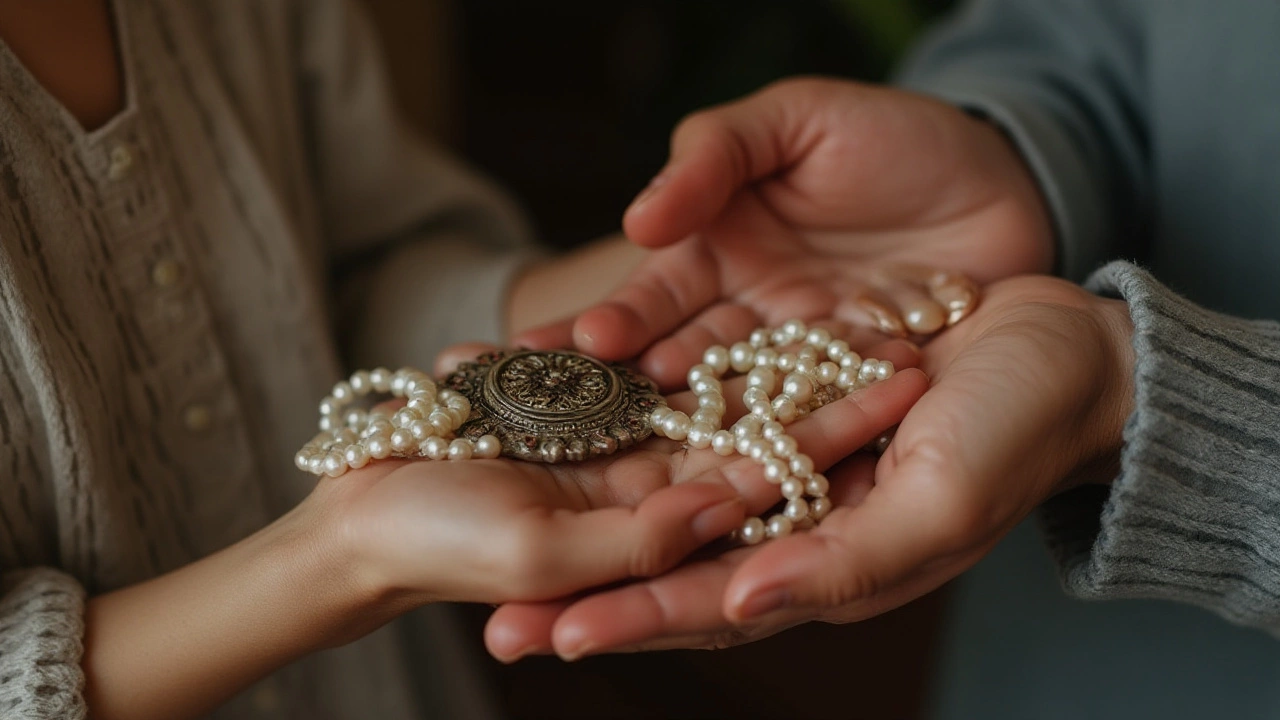
Features of Antique Jewelry
Antique jewelry, with at least a century of history woven into each piece, stands as a testament to past civilizations' craftsmanship and style. Delving into these treasures, you often come across designs that reflect the technological and artistic milestones of bygone eras. For instance, from the Georgian era's intricate Georgian stones to Art Nouveau's nature-inspired motifs, each piece narrates its own tale of human ingenuity. Antique jewelry is typically handcrafted, which contributes to its uniqueness—no two pieces are exactly alike, even if they seem similar at first glance. The lack of standardization from its creation era makes each item one-of-a-kind.
The materials used in antique jewelry are indicative of the period's resources and levels of craftsmanship. For example, during the Victorian era, the proliferation of gold led to the popularity of ornate pieces with elaborate designs, while the Edwardian era favored platinum for its malleability and strength. Gemstones, too, were either naturally occurring or crudely cut, revealing the limitations of jewelry technology at the time. This natural quality often gives antiques their extra charm—they are not only beautiful but also represent the raw beauty of untouched stones, which many enthusiasts find particularly attractive.
One might wonder about the enduring appeal of such aged pieces. It's important to note that antique jewelry often holds more than just material value; it carries historical significance, making them prized collectibles. In fact,
"The appeal of antique jewelry lies in its ability to connect us to different times and stories," suggests jewelry historian Sarah Hue-Williams.This emotional connection elevates antique jewelry beyond mere adornment, turning it into a tangible link to the past. A keen collector thus often seeks not just beauty, but also the stories behind each piece, resurrecting the memories of those who wore them before.
From an investment viewpoint, antique jewelry can be quite valuable. But valuing these pieces isn't just about appraising the metals or the gemstones they contain; it's also about appreciating their rarity and condition. It's not uncommon for these pieces to show signs of wear, which only adds character if you ask any aficionado. Evaluators often look at the historical context as well, recognizing that certain designs or creators might be more desirable due to their influence in the jewelry world.
In conserving antique jewelry, one must take caution. Given their age, these pieces can be fragile. Proper maintenance involves cleaning with appropriate materials to prevent damange. Many collectors avoid storage in direct sunlight or damp environments, to preserve the integrity of their pieces.
Tables could be particularly helpful in understanding the progression and distinct features across different eras of antique jewelry:
| Era | Time Period | Characteristics |
|---|---|---|
| Georgian | 1714-1837 | Handcraftsmanship with intricate coil motifs, foiled colored glass gems |
| Victorian | 1837-1901 | Sentimental jewelry with lockets, cameos, and the rise of colored gemstones |
| Edwardian | 1901-1910 | Platinum, diamonds, delicate filigree, and light, airy designs |
| Art Nouveau | 1890-1910 | Nature-inspired motifs, unique detachable pieces, and pastel colors |
Valuing Jewelry Based on Age
The world of collectible jewelry can be an enchanting labyrinth, with pieces whispering stories from long-gone eras. However, determining the worth of a piece often begins with understanding its age. But how do we discern between a mere old trinket and something truly valuable? Recognizing the age involves both the history of the vintage jewelry and the more revered antique jewelry. To be considered an antique, a piece must be at least 100 years old, transporting us back to times when craftsmanship was deeply rooted in daily life. Vintage jewelry, on the other hand, starts around 50 to 100 years ago. This distinction isn't just about numbers; it encapsulates an era's essence and styles.
When evaluating such treasures, it's crucial to consider not just the physical aspects like materials and artistry, but also the historical significance, which sometimes holds an even higher value. From Art Nouveau to the roaring twenties, each period left a distinctive imprint on jewelry designs. Often, jewelry that captured the zeitgeist tends to fetch a higher price at auction due to its representation of a culture or movement. For instance, many collectors hunt for rare pieces from brands like Cartier and Tiffany & Co., treasured not only for their origin date but the craftsmanship and stories attached.
Moreover, it's not uncommon to hear experts like renowned appraiser Charlotte Jackson say, "A piece of jewelry is never just an object; it's both a chronicle and a witness."
“Understanding its journey can reveal layers of value beyond the visible," she notes.With that in mind, appraisers often rely on provenance, the record of ownership, which can significantly increase a piece’s value if it belonged to someone notable or was featured in a historical event.
Then, there’s the market appeal. While one might fall in love with Edwardian delicacies, the current market may sway towards more minimalist designs from the mid-century. The worth of any jewelry is as fluid as the preferences of those who collect it. Collectors might sometimes stumble upon gems, unnoticed until recognized by an astute appraiser who understands these subtleties. Collectively, these aspects make appraising such pieces both an art and a science requiring experience and instinct.
For an insightful evaluation, experts deploy various methods, including hallmark examination to check authenticity. Hallmarks, small stamps of metal content or maker marks, can shed light on both the origin and the age of the jewelry. Additionally, technology like spectrometry has been employed to precisely determine the metal content, assisting in the valuation process. These methods, combined, allow collectors and professionals alike to decipher the fascinating stories many pieces harbor.
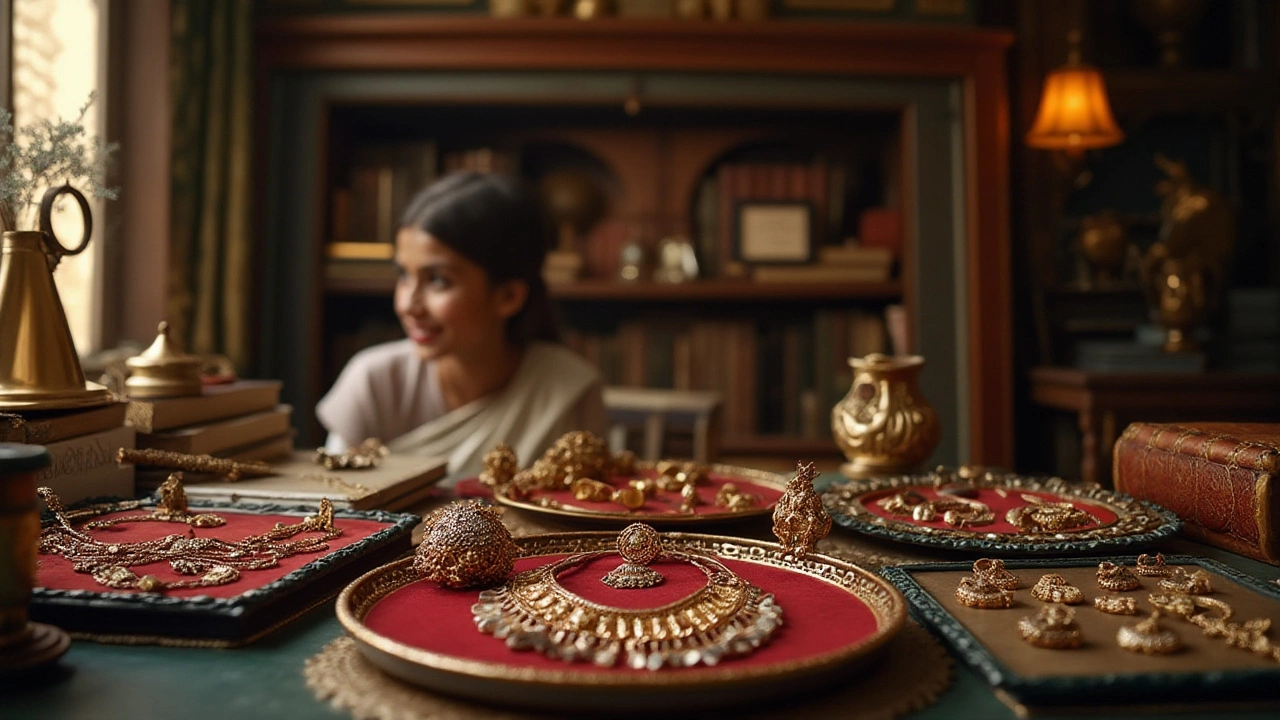
Navigating the Jewelry Market
Exploring the jewelry market can often feel like wandering through a kaleidoscope of glitter and glam, particularly when searching for antique jewelry or vintage jewelry. With countless options available, it's crucial to understand where to look and how to discern which pieces are valuable, historical, or merely aesthetic. The marketplace isn't just a walk-through of brick-and-mortar establishments anymore. Online platforms have made accessing sellers worldwide easier than ever before. Yet, the convenience comes with its own set of challenges, including authenticity verification and varying price points. Understanding these dynamics can better prepare you for the hunt.
"Jewelry takes people’s minds off your wrinkles." – Sonja Henie
One essential aspect to consider when navigating the jewelry space is understanding the pricing mechanisms. Vintage jewelry tends to sit at a lower price point compared to antique jewelry, mainly due to its lesser age. However, the premium often attached to antique pieces is well justified—both by the intricacies involved in their craftsmanship and the historical significance they carry. Authenticity is another key consideration. Always seek pieces backed by provenance or those authenticated by reputable sources. With age, jewelry often undergoes repairs or modifications, impacting its value. Be cautious of dealers unable to provide a clear history of their pieces.
If you prefer in-person shopping, antique fairs and estate sales are gold mines. These venues often provide unique and rare finds, offering an avenue to directly engage with knowledgeable vendors. Look for cues in the patina, craftsmanship techniques, and the materials—such as platinum settings in Art Deco pieces or gold filigree in Victorian ornaments. However, caution and keen attention should accompany your enthusiasm; some modern designs mimic older styles, making it crucial to differentiate between true antiques and inspired contemporary replicas.
Online marketplaces are another treasure trove, offering both convenience and a vast array of options. Yet, verifying authenticity is more complex digitally. Platforms like Etsy or specialized antique jewelry websites provide detailed descriptions and images, but scrutinizing these for authenticity indicators and user reviews is advisable. Significantly, auction platforms like Sotheby’s offer high-value, verified pieces but come with competitive bidding processes. Knowledge of the market context and historical trends is invaluable when operating in these virtual spaces.
Ultimately, patience is your friend. As trends ebb and flow, keeping track of market demands for specific types or eras can pay off greatly. The key is to remain informed and embrace the blend of timeless beauty and financial investment opportunity that both vintage and antique jewelry present. Arming yourself with the right knowledge and tools for navigating the diverse jewelry market will enhance your collecting experience, ensuring each cherished piece holds both personal and historical value.
